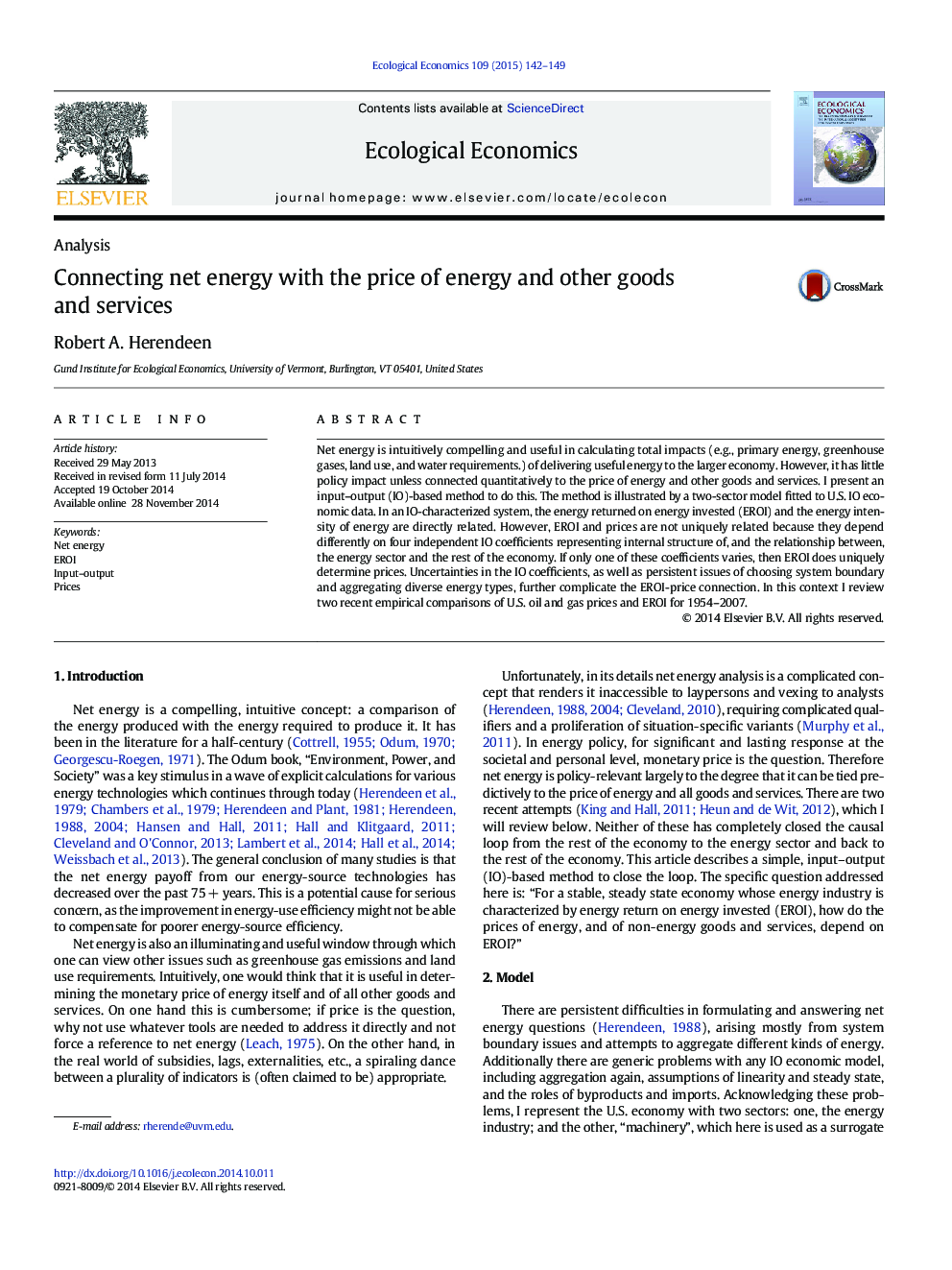| Article ID | Journal | Published Year | Pages | File Type |
|---|---|---|---|---|
| 5049610 | Ecological Economics | 2015 | 8 Pages |
â¢Article explores the connection between energy return on investment (EROI) and prices in a two-sector Input-Output (IO) framework.â¢For a steady state, IO-characterized economy, EROI = εe/(εe â 1), where Ã¥e is the energy intensity of the energy sector.â¢EROI and prices are not uniquely related because they depend differently on four independent IO coefficients.â¢Allowing many assumptions, in 2007 U.S. EROI was 3.25 Btuprimary/Btu.â¢Two empirical investigations of U.S. oil price vs. EROI are reviewed.â¢System boundary and aggregation issues complicate the EROI-price connection issue even more.
Net energy is intuitively compelling and useful in calculating total impacts (e.g., primary energy, greenhouse gases, land use, and water requirements.) of delivering useful energy to the larger economy. However, it has little policy impact unless connected quantitatively to the price of energy and other goods and services. I present an input-output (IO)-based method to do this. The method is illustrated by a two-sector model fitted to U.S. IO economic data. In an IO-characterized system, the energy returned on energy invested (EROI) and the energy intensity of energy are directly related. However, EROI and prices are not uniquely related because they depend differently on four independent IO coefficients representing internal structure of, and the relationship between, the energy sector and the rest of the economy. If only one of these coefficients varies, then EROI does uniquely determine prices. Uncertainties in the IO coefficients, as well as persistent issues of choosing system boundary and aggregating diverse energy types, further complicate the EROI-price connection. In this context I review two recent empirical comparisons of U.S. oil and gas prices and EROI for 1954-2007.
